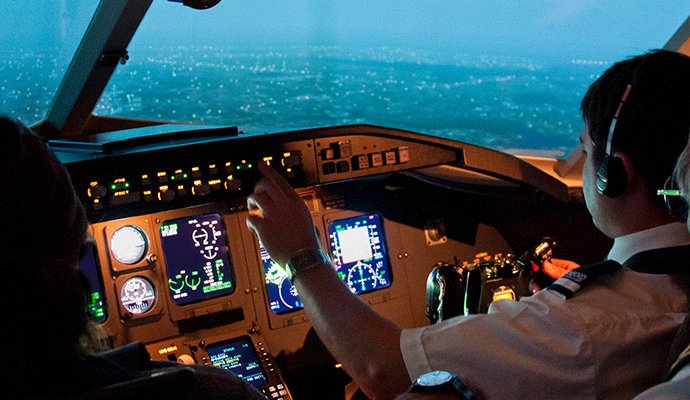
Training Pilot
In the ongoing military scorecard between the United States and China over who has the most “stuff” – be it troops, tanks, guns, ships or airframes – the human element is sometimes overlooked. By human element we mean the operators behind the hardware making the decisions on what, how and when to shoot and how to employ tactics and counter-tactics based on the environment and the adversary. Neglecting the human element of the U.S.-China military competition would be a major omission, however, as it remains a key variable in assessing a country’s overall military power and capability.
The determinants of operator competency are shaped to a large extent by the military and political culture under which troops train. During the Cold War, U.S. planners believed quantitative advantages in the Soviet air force were offset by superior USAF training and tactics – a product of a U.S. training system that breeds pilot autonomy and objective assessments of error. In many respects, this was a correct assessment at the time. In comparing U.S. and Soviet air forces, for example, Col. Mike Press, writing in Air University Review in the mid-80’s, penned an articulate and persuasive case for U.S. fighter pilot training superiority based on the USAF training program, but warned that “human advantage is very fragile and even here the Soviets show signs of progress.”
Now three decades later, Press’s words remain more relevant than ever when it comes to assessing the air forces of China and the United States. The People’s Liberation Army Air Force (PLAAF) has made tremendous strides in recent years, fielding an impressive array of third-, fourth- and even fifth-generation stealth aircraft. By numbers alone, the PLAAF remains one of the largest air forces in the world. The PLAAF also desires to build what it calls a “Strategic Air Force” to play a larger role in China’s push to project power and influence in areas farther from the Chinese mainland. Already, the PLAAF has begun sending bombers to patrol the disputed Spratly Islands in the South China Sea – areas in which it would have been unheard of for the PLAAF to operate just five or 10 years ago.
Until recently, little was known, however, about how Chinese air force pilots train. In our report on PLAAF fighter pilot training, we find that the PLAAF has embarked on major reform of its pilot training program in order to remedy deep-seated flaws in fighter pilot competency. We know this because of the availability of an increasingly large number of Chinese language open sources published by the People’s Liberation Army and other authoritative military professional military education institutions. For our report, we examined articles on PLAAF fighter pilot training at the operational unit over a five-year time frame in the PLAAF’s official newspaper, Kongjun Bao (Air Force News). What we found was a PLAAF that is acutely aware of its shortcomings in pilot combat skills and that is seeking to train pilots capable of “fighting and winning” battles against near peer military adversaries, like the United States.
The core of the reform is an effort to train pilots to fight under what the PLA refers to as “actual-combat conditions.” The emphasis on “actual combat conditions” is manifested in training scenarios meant to mimic or simulate real-world battle conditions by adopting within daily training routines elements of nighttime battle training, complex electromagnetic environment, special geographical environments, and combined arms training. The PLAAF’s lack of recent wartime experience magnifies the importance of constructing a training regime grounded in scenarios that approximate to the greatest extent possible technologically sophisticated battlefield conditions.
Combined-Arms Drills and Exercises
When not performing daily training during the spring and fall seasons (what the PLAAF refers to as training in “subjects” and “topics”), pilots are honing their skills in increasingly competitive and multi-dimensional skills competitions under “opposition-force exercises” during the summer. These are multi-day, multi-branch exercises that involve a simulated opposition force and combined-arms elements either within the PLAAF itself (aviation, surface-to-air missiles (SAMs), anti-aircraft artillery (AAA) and radar) or among different services within the Chinese military (army, navy, and rocket forces). Exercises seek to integrate and apply the routine training subjects and skills practiced by aviators during the year into a competitive environment, in which pilots are graded on performance and tactical skills.









